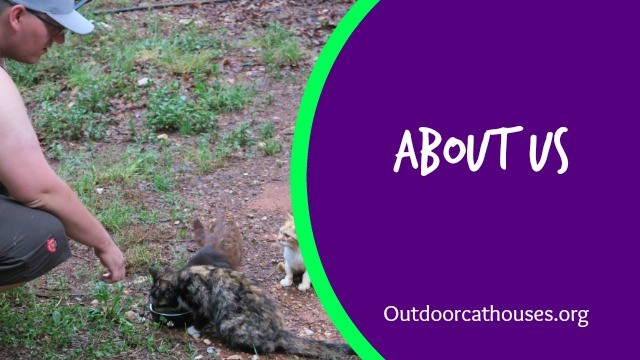When you have a larger-than-average feline lounging around outside, whether it’s a hefty tabby, a Maine Coon, or a big-boned domestic mix, finding the right outdoor cat house can feel like a serious mission. While all cats deserve a cozy spot to retreat, large cats have special needs when it comes to comfort, space, and support.
Two of the most common materials for outdoor cat houses are plastic and wood. But which one works better for bigger cats? That depends on several factors including your cat’s size, climate, and how you plan to maintain the house. In this guide, we’ll look at the pros and cons of plastic and wood outdoor cat houses with large cats in mind—and help you make the most informed choice for your feline friend.
Understanding the Needs of Large Cats
Before we get into the materials, it’s important to understand why large cats require different considerations:
- More Floor Space: They need more room to turn around, stretch, and lie down comfortably.
- Wider Openings: Standard-sized entrances might be too snug.
- Stronger Floors and Walls: Heavier cats need sturdy structures that won’t wobble or warp.
- Extra Support for Elevated Designs: If the house is raised, it needs to be balanced and able to handle the extra weight.
Plastic Cat Houses: A Closer Look
Plastic outdoor cat houses are known for being lightweight, waterproof, and easy to clean. They’re often made from molded materials like polyethylene or PVC.
Advantages for Large Cats:
- Easy to Move: You can relocate the house without much effort.
- Waterproof Shell: Keeps interiors dry, especially in wet climates.
- Smooth Surfaces: Less chance of splinters or scratches.
Challenges for Large Cats:
- Limited Space: Many plastic models are designed for average-sized cats and may feel cramped for larger breeds.
- Weight Limitations: Some lightweight plastic models may buckle or flex under heavier cats.
- Smaller Openings: The doorway might not accommodate broad chests or long bodies.
If you’re considering plastic, look specifically for models marketed as “large” or “multi-cat” and check the interior dimensions.
Wood Cat Houses: A Closer Look
Wooden outdoor cat houses are often favored for their durability and visual appeal. They’re typically made from materials like cedar or fir and can be customized easily.
Advantages for Large Cats:
- Spacious Interiors: Wooden cat houses are often roomier and easier to modify.
- Strong Construction: They hold up well under extra weight.
- Elevated Designs: Many include platforms or legs that help keep the interior warm and dry—great for big cats that need solid footing.
Challenges for Large Cats:
- Heavier to Move: These are bulkier and more difficult to reposition.
- Maintenance Required: Wood can warp or rot if not sealed properly, especially if exposed to rain or snow.
- May Need DIY Add-Ons: Not all models come insulated or weatherproofed.
Comparing the Two for Large Cats
1. Space and Comfort
- Wood: Offers more flexibility and interior space. You can even build or order custom designs suited to your cat’s size.
- Plastic: Typically more compact. Great for medium cats, but may feel tight for cats over 15 pounds unless clearly labeled for large breeds.
2. Weight Support
- Wood: Wins hands-down. The thick panels and solid bases provide the reinforcement larger cats need.
- Plastic: May flex or become unstable, especially if the house is raised or if multiple cats are using it.
3. Ease of Entry
- Wood: More likely to come with customizable or larger entryways.
- Plastic: Often has smaller, molded entry holes. Measure your cat before committing.
4. Weather Resistance
- For a breakdown of insulation and winter performance, check out our companion article, “Difference Between Plastic and Wood Outdoor Cat Houses for Winter.”
In brief:
- Plastic: Best for wet climates but requires insulation upgrades.
- Wood: Naturally more insulating but needs sealing and upkeep.
Pro Tips for Choosing a House for Large Cats
- Always Check the Dimensions: Look at both exterior and interior measurements.
- Choose Raised Designs: Elevating the house helps protect against moisture and drafts—especially for heavy cats who may press their weight against the floor.
- Add Straw Bedding: Not only does it insulate, but it also molds to your cat’s body for extra comfort.
- Look for Dual Openings: Larger cats may feel more secure if they have an escape route.
- Reinforce Plastic Floors if Needed: Use a flat wooden panel inside a plastic house to support your cat’s weight.
Which Is Better for Large Cats: Plastic or Wood?
Here’s a quick recap to help you decide:
Choose Wood If:
- Your cat is 15+ pounds
- You want a long-term structure
- You need the option to customize size and features
- You live in a climate with cold winters or high winds
Choose Plastic If:
- You live in a mild, rainy climate
- You need portability or easy cleaning
- You find a model specifically built for larger cats
Final Thoughts
At the end of the day, the best outdoor cat house is one that keeps your cat safe, dry, and comfortable—and that fits their body comfortably. For large cats, that often means leaning toward a wooden house for the extra space and strength. But don’t rule out plastic completely—especially if you’re in a warmer region and can find a model that’s roomy enough.
Whichever material you choose, remember: it’s not just about a house, it’s about a home.
This article is not a substitute for professional veterinary advice. If you’re concerned about your cat’s health, weight, or behavior, be sure to consult your veterinarian.
